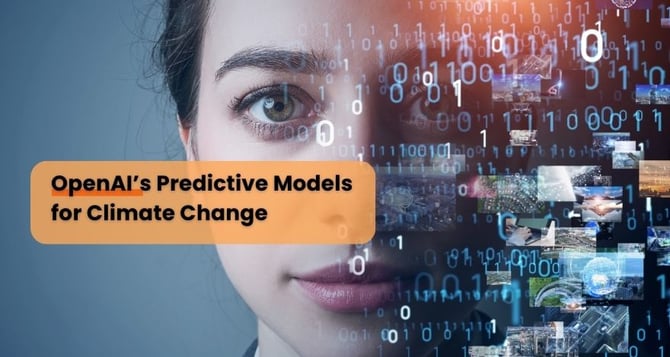Predictive Models for Climate Change with OpenAI
Harnessing AI, this blog delves into OpenAI's role in climate science. From data interpretation to climate forecasting, discover how AI models aid scientists. Collaborate responsibly for impactful climate solutions.

Climate change, one of today's gravest challenges, prompts innovative solutions through Generative AI Development. Scientists harness artificial intelligence and machine learning, exploring predictive models powered by OpenAI. This article delves into practical Python examples, showcasing AI's pivotal role in comprehending and mitigating climate change's impact on our environment, society, and economy.
The Role of Predictive Models
Predictive models play a crucial role in climate science by simulating complex climate systems, analyzing historical data, and forecasting future climate scenarios. These models help us understand how climate change is affecting our planet and inform decision-making to mitigate its impact.
Leveraging OpenAI for Climate Predictions
OpenAI's advanced language models, such as GPT-3, can be used to assist climate scientists and researchers in various ways, including data analysis, natural language understanding, and model interpretation. Let's explore some practical examples of how to integrate OpenAI with climate prediction efforts.
Example 1: Natural Language Data Interpretation
OpenAI models excel at interpreting and summarizing textual data. In climate science, this capability can be invaluable for understanding research papers, reports, and climate data.
Example 2: Data Analysis and Visualization
Python's rich ecosystem of data analysis and visualization libraries can be combined with OpenAI's language models to analyze and present climate data effectively.
Example 3: Climate Scenario Forecasting
OpenAI models can assist in generating climate scenario forecasts based on historical data and research findings.
Considerations and Best Practices
1. Data Quality: Ensure that the climate data used for analysis and model training is accurate and reliable.
2. Interpretation: When using AI for natural language understanding, carefully review and validate the generated interpretations to avoid errors.
3. Model Tuning: Fine-tune AI models for climate-specific tasks to improve their accuracy and relevance.
4. Collaboration: Foster collaboration between climate scientists and AI researchers to leverage the strengths of both fields.
5. Ethical Use: Be mindful of the ethical implications of AI in climate research, including data privacy and responsible AI deployment.
Unleash ChatGPT’s Potential in Climate Science
AI-Driven Insights, Climate Solutions. Empower Your Research with ChatGPT Development & Integration. Signity Solutions Leads the Way.
Advancing Climate Science with AI
Predictive models powered by OpenAI pave the way for revolutionizing climate science. With ChatGPT Development & Integration, Signity Solutions facilitates seamless collaboration. By merging AI capabilities, domain expertise, and precise data, scientists gain profound insights into climate change dynamics. Accurate predictions and strategic mitigation plans are crafted, addressing the pressing global challenge of climate change.


%201-1.webp)


.png?width=344&height=101&name=Mask%20group%20(5).png)








.png?width=352&name=microsofts-recall-feature%20(5).png)







